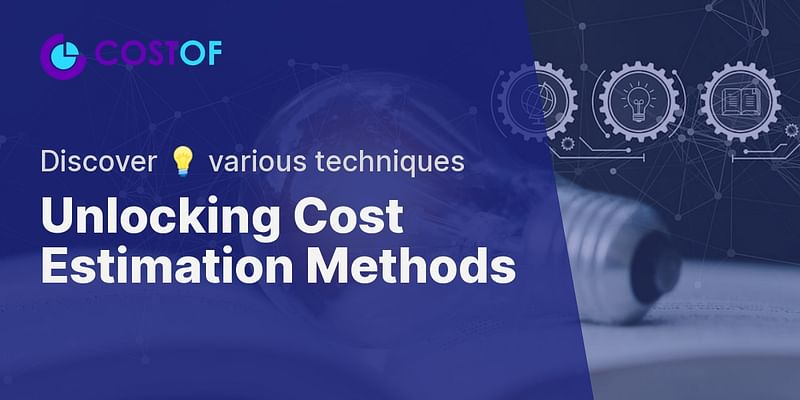Lyla Gibson is a seasoned journalist with a specialized focus in finance. With more than ten years of experience, she has developed a deep understanding of cost analysis and budgeting. Her strength lies in simplifying complex financial concepts, making them easier to understand. Lyla's passion for personal finance and cost efficiency empowers her to deliver accurate and valuable information to her readers.
Hey there! When it comes to estimating costs, there are several methods that professionals use to ensure accuracy and reliability. Let's dive into the different methods for cost estimation.
1. Analogous Estimating:
This method involves using historical data from similar projects to estimate the cost of a new project. By comparing the current project to past projects with similar characteristics, we can make educated guesses about the cost based on historical data. Analogous estimating is quick and easy, making it a popular choice when there is limited information available.
2. Parametric Estimating:
Parametric estimating uses statistical relationships between historical data and project variables to estimate costs. It involves identifying key parameters that affect the cost and using mathematical models to calculate the estimated cost. For example, in construction, the cost per square foot can be used as a parameter to estimate the total cost of a building.
3. Bottom-Up Estimating:
This method is the most detailed and accurate, but also the most time-consuming. Bottom-up estimating involves breaking down a project into smaller components and estimating the cost of each individual component. These estimates are then aggregated to determine the total cost. This method is commonly used in construction, where each aspect of the project, from materials to labor, is meticulously estimated.
4. Three-Point Estimating:
Three-point estimating takes into account the best-case, worst-case, and most likely scenarios to estimate costs. It involves determining the optimistic, pessimistic, and realistic estimates for each task or component of a project. By considering different scenarios, this method provides a more comprehensive and realistic estimate, reducing the risk of underestimating or overestimating costs.
5. Expert Judgment:
Sometimes, the best way to estimate costs is by relying on the expertise and experience of professionals in the field. Expert judgment involves seeking input from industry experts, consultants, or experienced team members who have a deep understanding of the project and its requirements. Their insights and knowledge can help provide a more accurate estimate.
Remember, each method has its strengths and weaknesses, and the choice of method depends on the project's complexity, available data, and time constraints. It's important to select the most appropriate method based on the specific circumstances.
I hope this breakdown of different cost estimation methods has been helpful! If you have any more questions or need further assistance, feel free to reach out.















